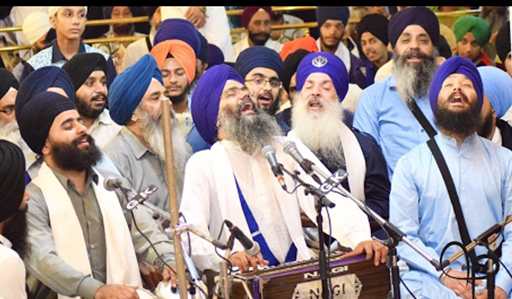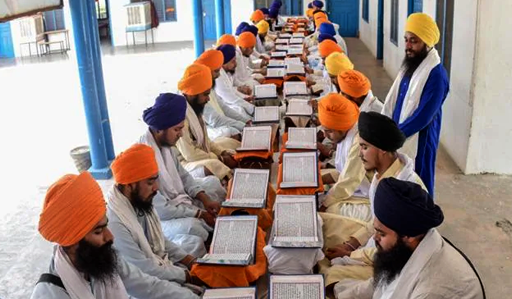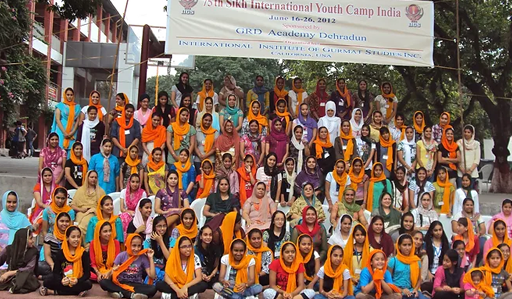Mainstream Sikhism follows the Sikh code of conduct, which is based on the hukam of the Tenth Guru Gobind Singh and is written down in the Shiromani Gurdwara Parbandhak Committee's Rahit Maryada (SGCP). Sri Akal Takhat has given its approval to all 10 of these Sikhism sects. Even though many Sikhs follow their founder's extra teachings, like branches on a single tree, they are all considered to be part of the Sikh Panth because they follow the core principles of Sikhism.




Followers of the Neeldhari religion, which was started by Sant Harnam Singh of Kile Sahib in 1966, are strict vegetarians who don't cut their hair or beards. They also follow a strict dress code and wear a Neela bana of blue Chakuta (turban) and Kammarkassa (cummerbund). Neeldharis believe that there is only one living guru, and that guru is the holy book, Guru Granth Sahib. They are a peace-loving sect, and they encourage initiation with the Tenth Guru's original code of conduct. The Neeldhari Sangat puts a lot of importance on Naam simran and kirtan, which are led by Sant Satnam Singh of Pipli Sahib. Akal Takhat has made it official that the Neeldhari of Pipli Sahib is part of the main Sikh Panth. On Vaisakhi, April 15, 2012, the Pipli Sahib Neeldharis, the Jethadars of the Five Takhats, and other Panthik officials put on an event where more than 10,000 people were initiated in the Amritsanchar ceremony during a smagam at the Neeldhhari headquarters in Gurudwara Neeldhari Samprada Pipli Sahib, of Bhagwan Nagar Colony in Pipli Kurukshetra, Haryana.
The Nihangs are a warrior sect of Sikhism. They are also known as Akalis. They are the official military force of the Khalsa Panth, and they can protect any gurdwara where they live. The Nihungs used to live in Akal Bunga, which is close to Amritsar. They now meet in Anandpur.
People who are Nihang Akalis don't usually get married. Instead, they learn Gatka, a Sikh form of martial arts, and ride horses. A tall domalla and a blue chola make up Nihang Bana. Nihangs are always carrying shastra weapons. People often refer to the Nihang Akalis as the crocodiles of the battlefield. Since at least the Dal Khalsa missile system, they have been fighting each other. Nihang Akalis are called ladlee fauj, which means they are the Tenth Guru Gobind Singh's favorite personal army. Heros like Baba Deep Singh and Akali Phool Singh are well-known.
A lot of Sikhs, maybe even most of them, don't belong to any group. Instead, as a sign of their faith, they keep their hair long. The name for these people is Kes (kesh) Dhari. They wear karas on their wrists most of the time. Men wear pagri or any other kind of turban they like. Boys wear patka. Married women wear their hair in a bun at the nape of the neck and cover it with a chunni. Girls wear braids.
People who have been initiated can wear religious items or just symbols of the 5 Ks, like a thread around the neck with small kirpans and kangas or a wooden kanga with a steel symbol of a kirpan embedded in it. Nitnem can be as easy as saying "Jajpi sahib," or it can be the daily prayers from the code of conduct. Seva is one of the most important parts of the 3 Golden Rules, which are the most important parts of a Sikh's life. Non-religious Sikhs are the backbone of the Sikh Panth and provide most of the money for gurdwaras around the world.
The Shiromani Gurdwara Parbandhak Committee (SGCP) was set up in 1920 as the parliament of the Sikh nation while it was ruled by the British. This was done so that the Sikhs could take back control of all historic gurdwaras and have the right to run them. The Sikh Gurdwara Act of 1925 made it legal for the Sikhs to take over gurdwaras and shrines that had been run by the Udasi sect for many years and had been influenced by the corrupt clergy.
Based on what Sikh gurus taught, the SGPC was given the job of setting the rules for all Sikh denominations about who can be called a Sikh and what the Sikhism code of conduct, daily prayers, initiation, and articles of faith are. The SGPC is also the last word on things like setting the dates for special events on the Nanakshahi calendar. Members of the SGPC Committee are chosen by people who are eligible to vote every five years.
Sikh Dharma of the Western Hemisphere was made by Sikh-leaning members of 3HO. 3HO is a yoga-based branch of Sikhism that was started in the United States in the 1970s by Yogi Bhajan. It became Sikh Dharma World Wide (SDW) in the end, and on November 26, 2012, as its members spread around the world, it became Sikh Dhamra International. "Guru Granth Sahib, the lives and teachings of the Sikh Gurus, and the teachings of Siri Singh Sahib, also known as Yogi Bhajan," says the SDI's mission statement.
Members of SDI do yoga and are vegetarians. As part of nitnem, they don't read the 40th page of Anand Sahib with the first five pages unless they've read all 40 pages. SDI members are easy to spot because they usually wear white bands and turbans. The few who wear blue are mostly initiated young men who went to schools in India.
Gurdwara Tapoban of Ontario (GTO) teaches young Sikhs how to protect and practice Tat-Gurmat Maryada in a pure way. The Tapoban hardcore Appalachia to Sikhi includes initiation based on the highest possible interpretation of the original Khalsa code of conduct set up by Tenth Guru Gobind Singh. This includes keeping a keski (a short turban) as a Kakar (article of faith).
Tapoban is all about singing Akhand Kirtan as a group while sitting in front of the original Lareedar form of Guru Granth, which is written in a single line with no breaks, and eating bibek langar cooked at an all-iron Sarbloh. Tapoban doesn't think that the controversial Ragmala came from God, so they don't accept it as a part of Guru Granth Sahib.